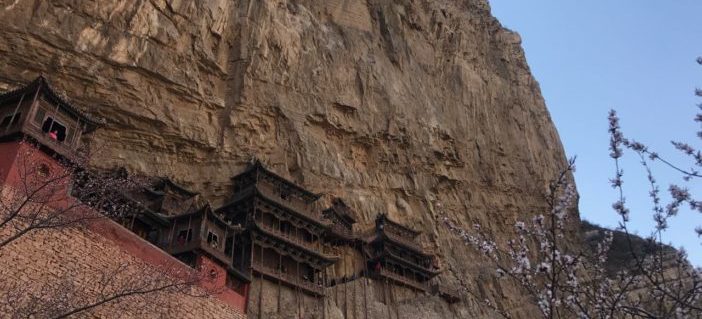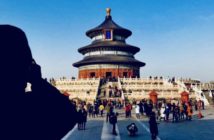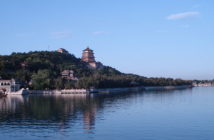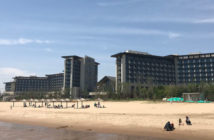In today’s China Bucket List in Shanxi, we continue our tour of the ancient city of Datong, the coal capital of China. But instead of seeing coal mines, we’ll hang out in the Hanging Temple in Hunyan County.

Don’t let the name fool you; the Hanging Temple (also called as Xuankong Temple) is actually perched on the cliff side of Mount Heng (恒山; Héng shān), one of the Five Great Mountains of China. These mountains were pilgrimage sites in ancient China primarily because of their Taoist links. Mount Heng is also known as the North Great Mountain.
A few hundred meters from the precipice, the Hanging Temple looks like an ornament or engraving of some sort. But as you move towards it, you will be amazed by its architecture: only 20 thin pillars appear to support the whole structure from its location 50 meters above the ground.
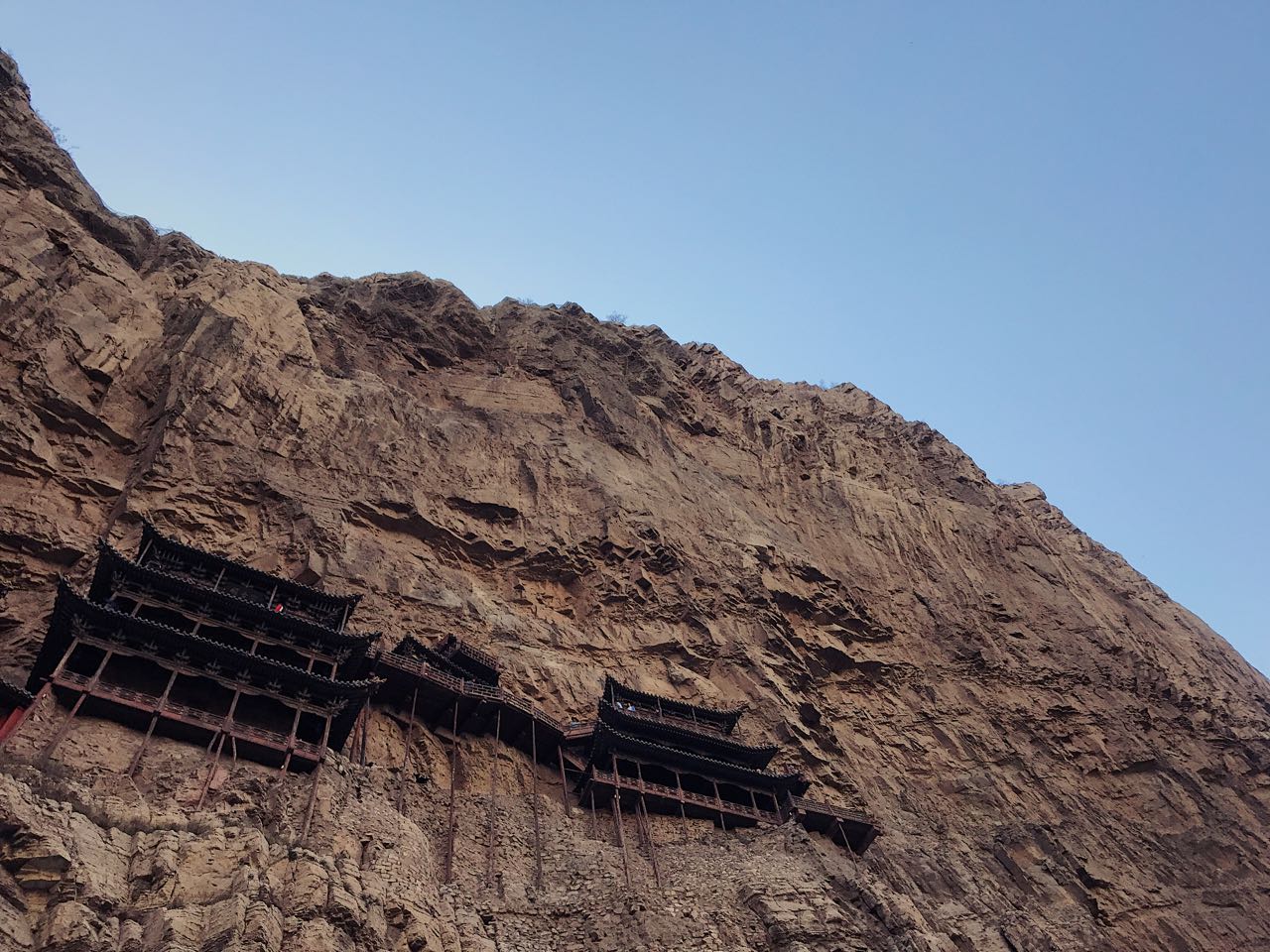
Yes, I counted the pillars. There are 20 pillars that “support” the temple.
Historical books and resources say the Hanging Temple was built around 1,500 years ago during the Wei Dynasty – and this fact wasn’t revealed to us by our tour group until many of us had reached the foot of the temple. Okay – it was unsettling because, hey, the whole structure was so old that it was surprising how it stood the test of time!
I remember one of the guides explaining that the pillars which support the temple have been left untouched since its construction, but I had doubts. Of course, the Hanging Temple has been a tourist location for such a long time and renovated parts were evident, especially at its foot. Despite this, the upward trek was unnerving because I could hear the wooden flooring creak! But the view from upstairs was so grand that I felt the need to go back to my old self…
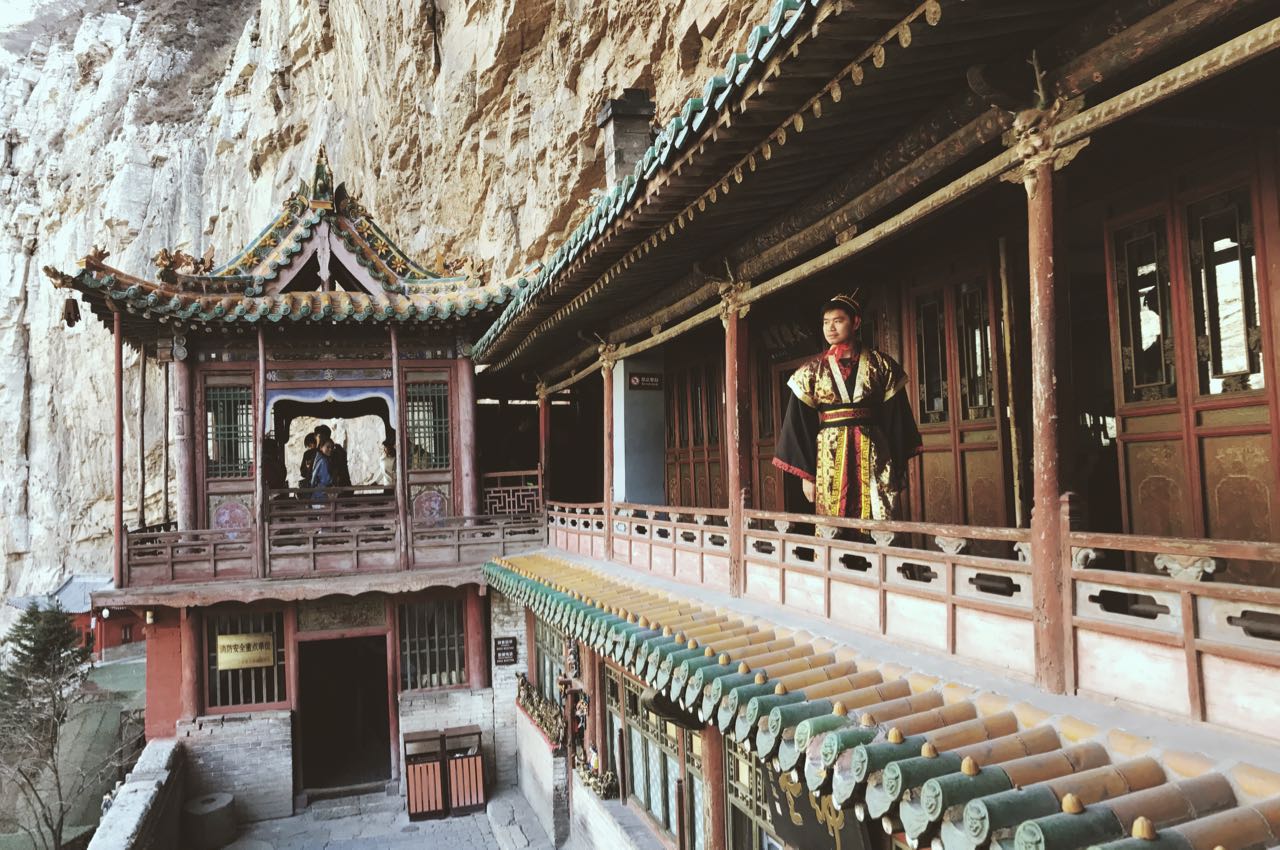
Make way for 安迪皇帝…
According to China Highlights, the Hanging Temple can stand without the support of the thin pillars because it was created without pillars!
Datong’s Hanging Monastery appears to be on stilts, halfway up the mountain, but they were actually created by abseiling from the top of the cliff and building it downwards. When the monastery was built, the pillars weren’t here, but they were added later, because many people wouldn’t dare to climb up to the monastery, worrying it would fall! The pillars can even be taken away without affecting the Hanging Monastery.

The Thunder Hall, located at the Southern Pavilion

The Long Hall that connects the two pavilions
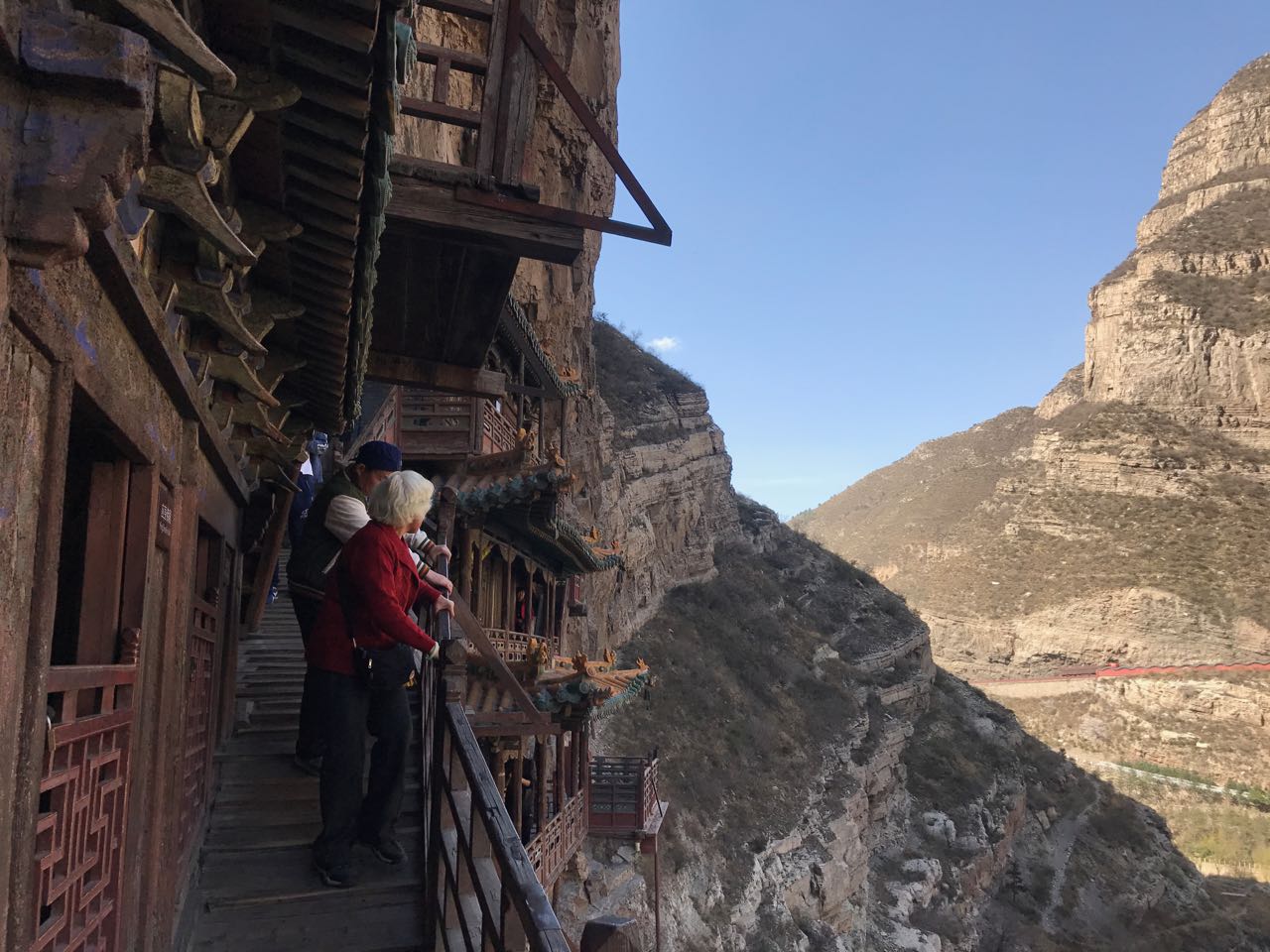
The same hall but with local tourists. That old lady was shaking all the way!
There are two pavilions at the temple. The Northern Pavilion contains claustrophobic halls filled with various statues related to Confucianism. The Southern Pavilion meanwhile has statues of Taoist figures. Standing over the halls (the two pictured above, the Thunder and the Long Halls) is an extremely Instagrammable (aka picture-worthy) experience, which makes you forget you’re literally hanging on the edge of a cliff. I’d seen people teetering while firmly holding the wooden rails in the halls. It’s not surprising because even I trembled especially when some obnoxious tourists crammed the narrow passageway!
My alter ego was in full swing during the hangout at the Hanging Temple and the continuation of the Datong journey at Huayan Monastery, about two hours away.
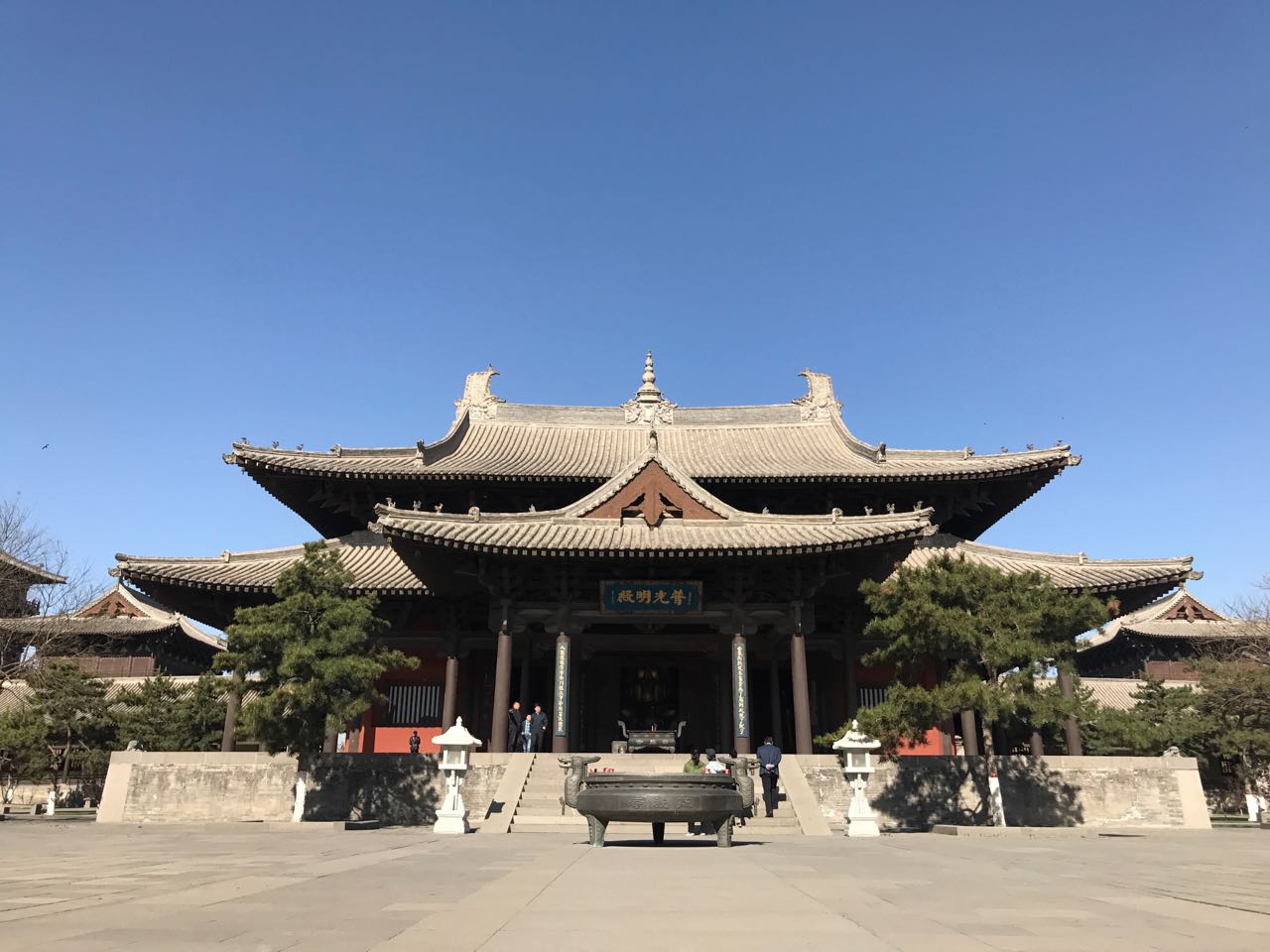
The Hall of Universal Brightness, which according to the guide tablet, is also translated as “Buddha’s light that illuminates the universe.”
There weren’t too many tourists at the monastery when we arrived, just laoren doing tai chi, so it was a pleasant tour. According to the travel guide at the entrance of the complex, Huayan Monastery was built in 1038 (wow, it’s nearly a millennium old now!) during the Liao and Jin dynasties, and that it was named after Huayan, a minor sect of Buddhism. Unlike the north-south structure of many temples and monasteries in China, Huayan faces the east following the custom of a tribe known as Qidan during the Liao era. Their traditions mainly revolved around worshiping the sun, which as we know rises in the east.
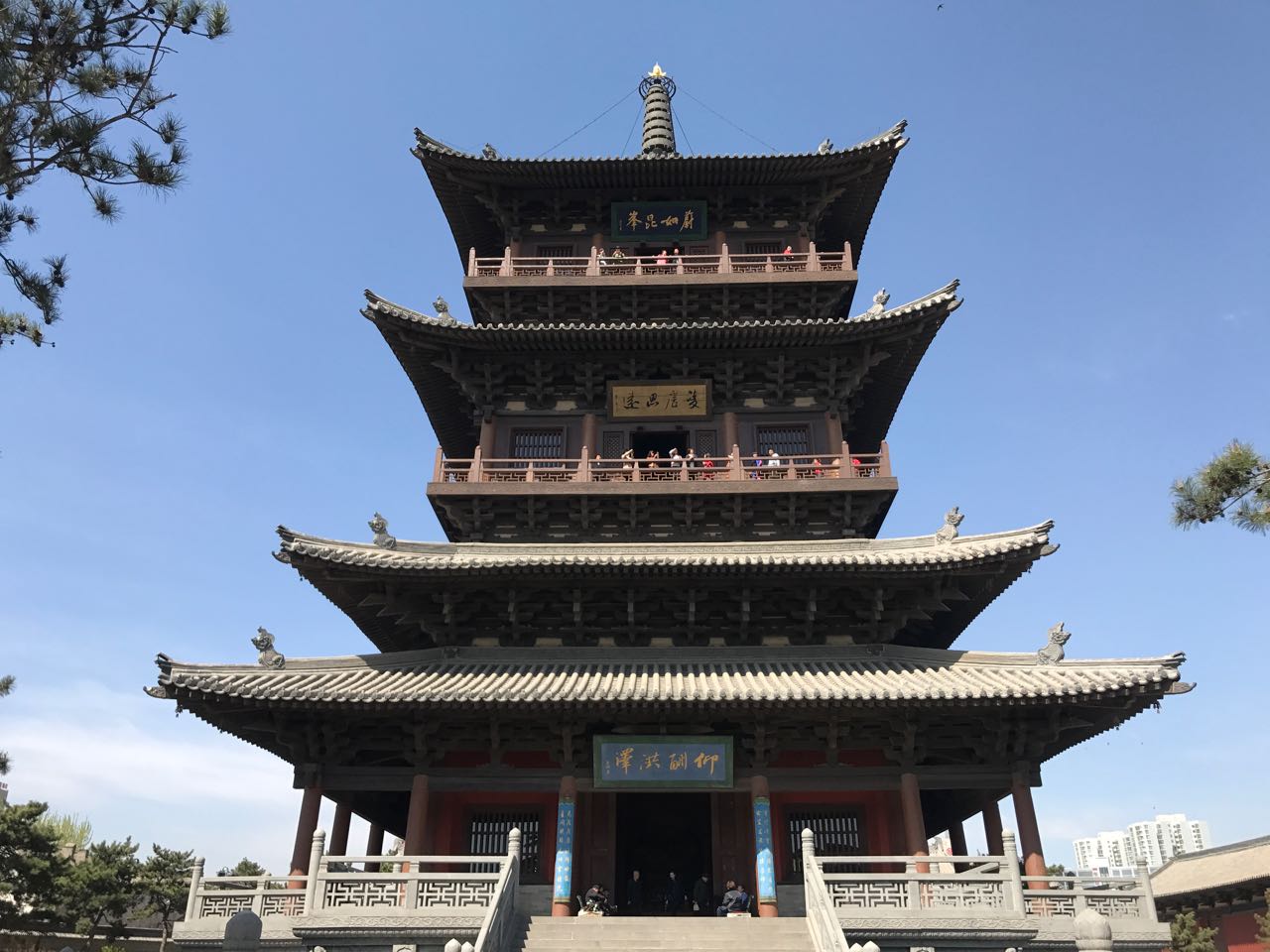
The 43-meter Huayan Pagoda, which has a massive, 500 sqm hall made up of 100 tons of bronze.
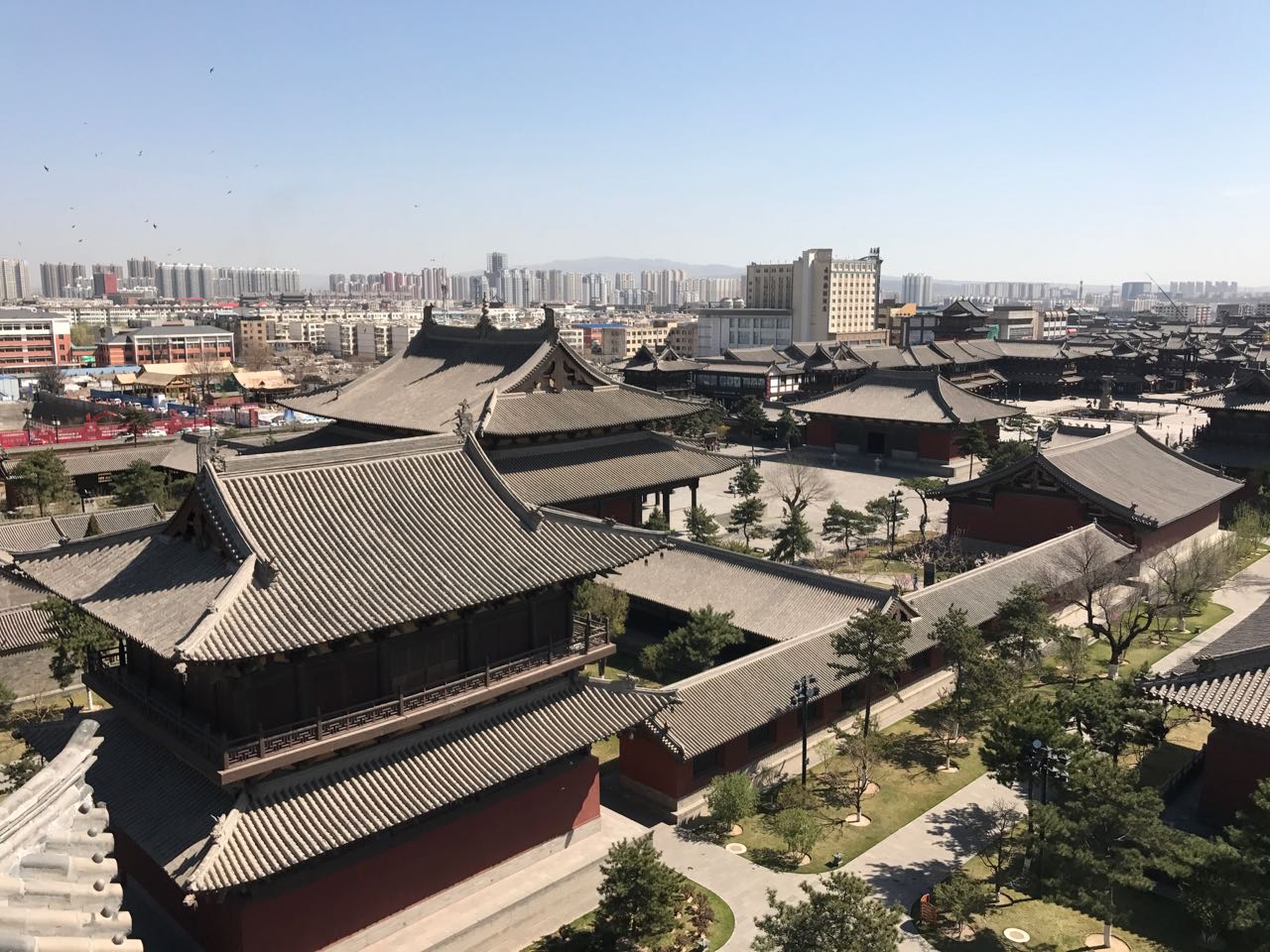
The view from the eastern side of Huayan Pagoda. Note the sprawling buildings in the background.

On the western side, here’s what you will see: old houses which will soon be demolished.
However enticing and welcoming the contents of the guide tablet at the monastery gate were, I couldn’t help but cringe when I reached the peak of Huayan Pagoda. The photos I’d taken from the highest floor showed an area scheduled for demolition to the west and urban encroachment to the east. These views are completely hidden from the strikingly splendid face of the complex on the ground. Even local tourists couldn’t hide their disappointment after seeing the creeping contrasts in the ancient city.
But with my alter-ego still active – yes, I strolled around the complex wearing the Emperor robe – many kids and adults were rather asking themselves why such a freak was allowed to roam the complex. Some tourists even had the audacity to take photos with my alter-ego!
But joking aside, it was such a cool experience to jaunt through historical places in China wearing traditional clothes. I mean, it was not a cultural appropriation thing, but it completely immersed me in my Datong travel so that I let my mind imagine what the customs were during imperial times. The fact that there were few tourists in the complex gave me an unimpeded view of the many attractions, and helped me appreciate more of Datong’s cultural masterpieces – despite the ongoing development slowly eroding the glorious ancientness of the city.

And that wraps up our China Bucket List in Shanxi series! Stay tuned as we have more Bucket List items to tick off! And we’ll go back to Beijing through my regular Subway Sunday column.
READ MORE: The “Joyous” Pavilion on a Breeding Ground for Mosquitoes
Photos: Andy Penafuerte III
See more of my stories here.
Subway Sunday | Mandarin Monday | The Bucket List | Doctor’s Corner
Email: andypenafuerte@beijing-kids.com
Web: coolkidandy.wordpress.com
Instagram: @coolkidandy

